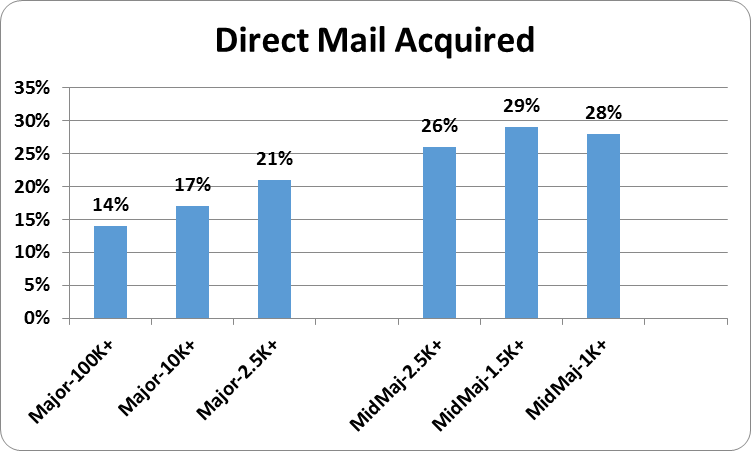What?
I know, most of our blogs address the unsustainable trends in fundraising, particularly in the area of direct mail acquisition. However, recently I completed an analysis that was so surprising, that it might breathe some new life.
The graph below shows the percentage of active FY14 large gift donors for a national organization whose first gift was attributed to a direct mail acquisition kit.
About one-in-six of the Majors and more than one-in-four of the Mid/Major donors first gift was through traditional direct mail acquisition.
Think of it another way, take away direct mail acquisition and a significant chunk of your future large donors will also go away.
Obviously, this requires a different approach to cultivation. It’s imperative to identify these direct mail donors with potential and treat them differently. Fortunately, there are analytical tools that can help you do this. (Connect with us and we can tell you more about our mid and major donor modeling services).
So the next time you are getting pressure from your board to chop your direct mail acquisition budget, show them this graph, and ask them if they are willing to write a check for the difference.


